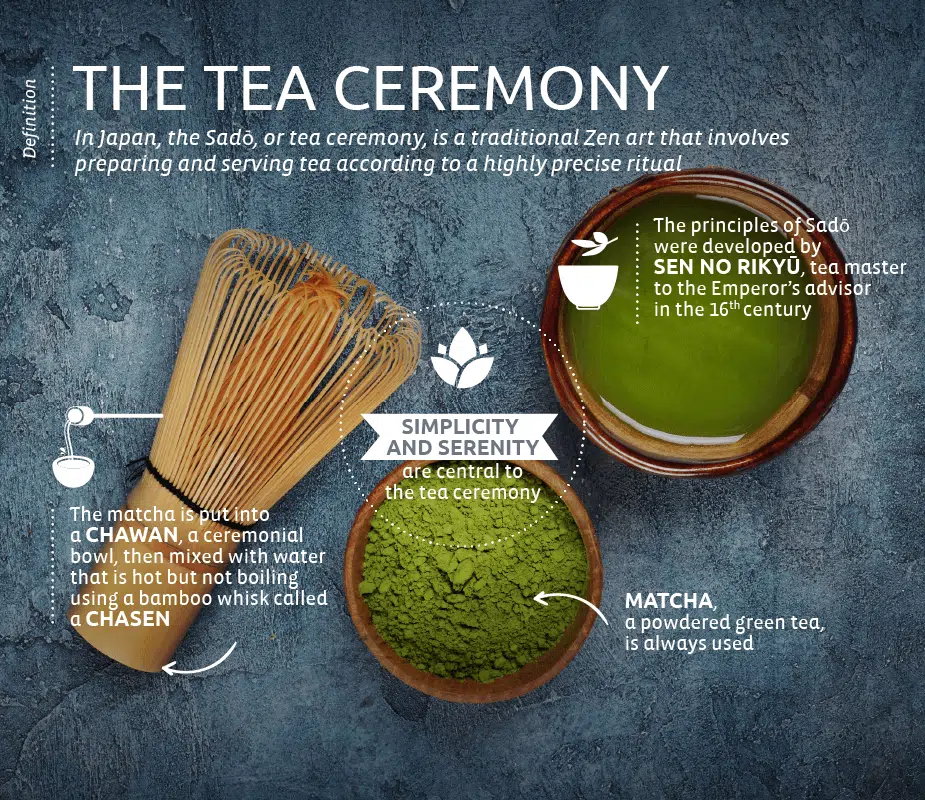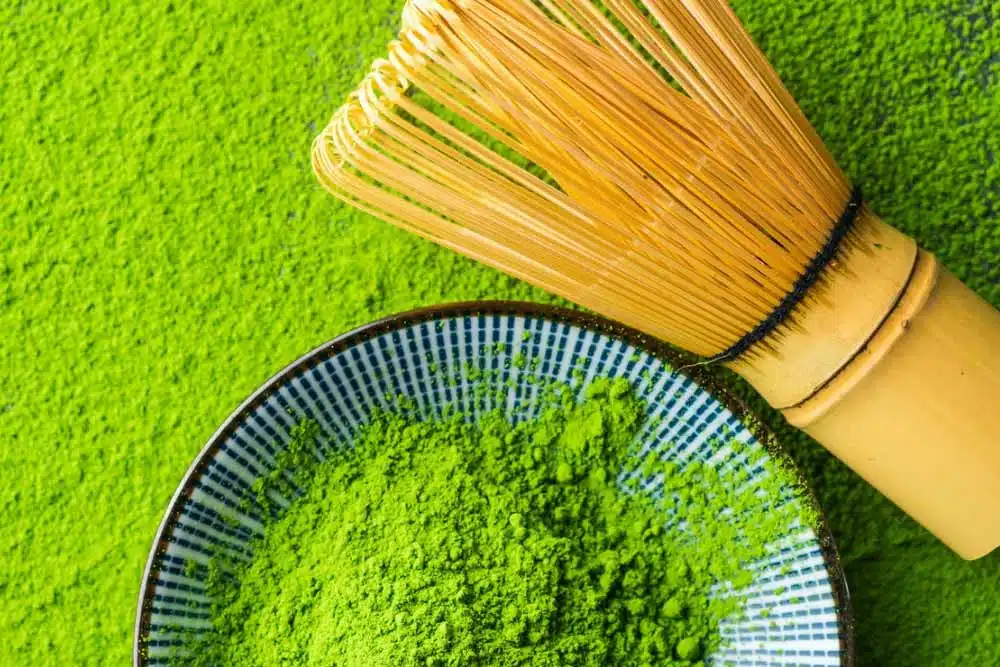A taste of Japanese culture
Westerners are often bewildered when attending a Japanese tea ceremony for the first time. Is the act of serving tea really a ceremonial art? Take a closer look at this fascinating part of traditional Japanese culture which, like onsen, Japanese gardens and tasting sake, is considered unmissable.

The Way of Tea
Just as only enlightened palates can truly appreciate the original taste of the matcha – the Japanese green tea made by grinding the dried leaves into a powder – only highly attentive souls will appreciate the Zen elegance of the tea ceremony. What could be interpreted as austerity or simplicity is, in the Land of the Rising Sun, an art of living, a principle of satisfaction and humility combined, sometimes taken to the extreme. Sadō, literally the “Way of Tea”, is a valuable illustration of this.
Objective: Zen
From the meticulous actions repeated many times by the host to the sometimes priceless utensils, not forgetting the way the settings are decorated, the ceremony is ritualised and precise, providing a small-scale illustration of Japanese etiquette and the serenity of “little everyday things”. So it is no coincidence that you will find yourself sitting in a traditional posture on tatami mats, surrounded by finely decorated Japanese screens and a landscaped Zen garden visible in the distance through a window. Just like it’s no coincidence that your host enters after you, wearing a kimono, and places in front of you the tools that are the key to a successful ceremony: the chawan (tea bowl), the natsume (tea caddy, usually lacquered), the chashaku (scoop for transferring the tea from the natsume to the chawan), the hishaku (bamboo ladle used to transfer water from one container to another), the chasen (bamboo whisk) and finally the chakin, cloth used to clean the objects for each step. Serious but never grave, the ceremony is like a calm iterative ballet, with natural meditative sounds that would make ASMR fans green with envy, a call to relaxation and revitalisation, a zen invitation for the guest to enjoy – traditionally in three mouthfuls – a matcha tea with a subtle and sublime taste.
Japanese-style drinking
Imported from China during the 9th century, tea achieved recognition in Japan thanks to exceptional ingredients and the contribution of Sen no Rikyū, a tea master who codified the principles of Sadō in the 16th century. Since then, despite a few variations depending on the school, the traditional ceremony remains more or less the same, with one constant: giving the guest a taste of this refined and unique Japanese art of living.

PONANT takes you there
Discover the Land of the Rising Sun and its age-old traditions on a luxury cruise



